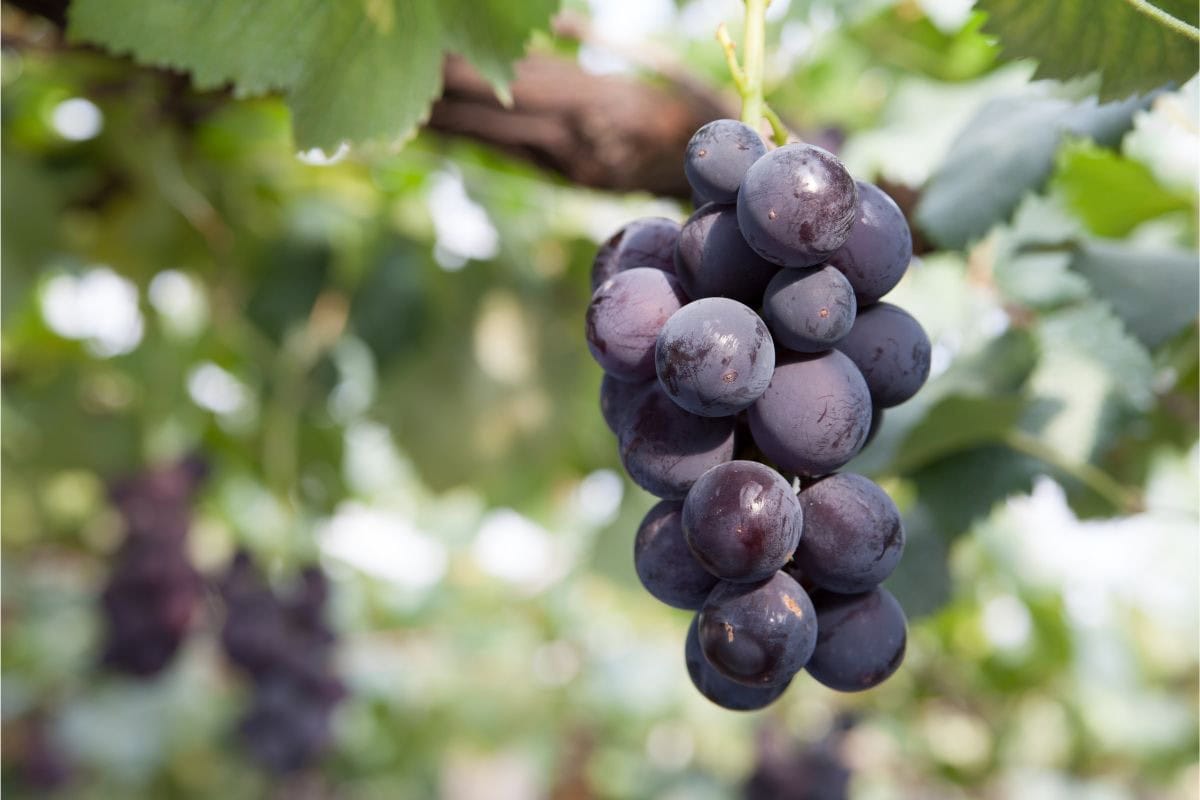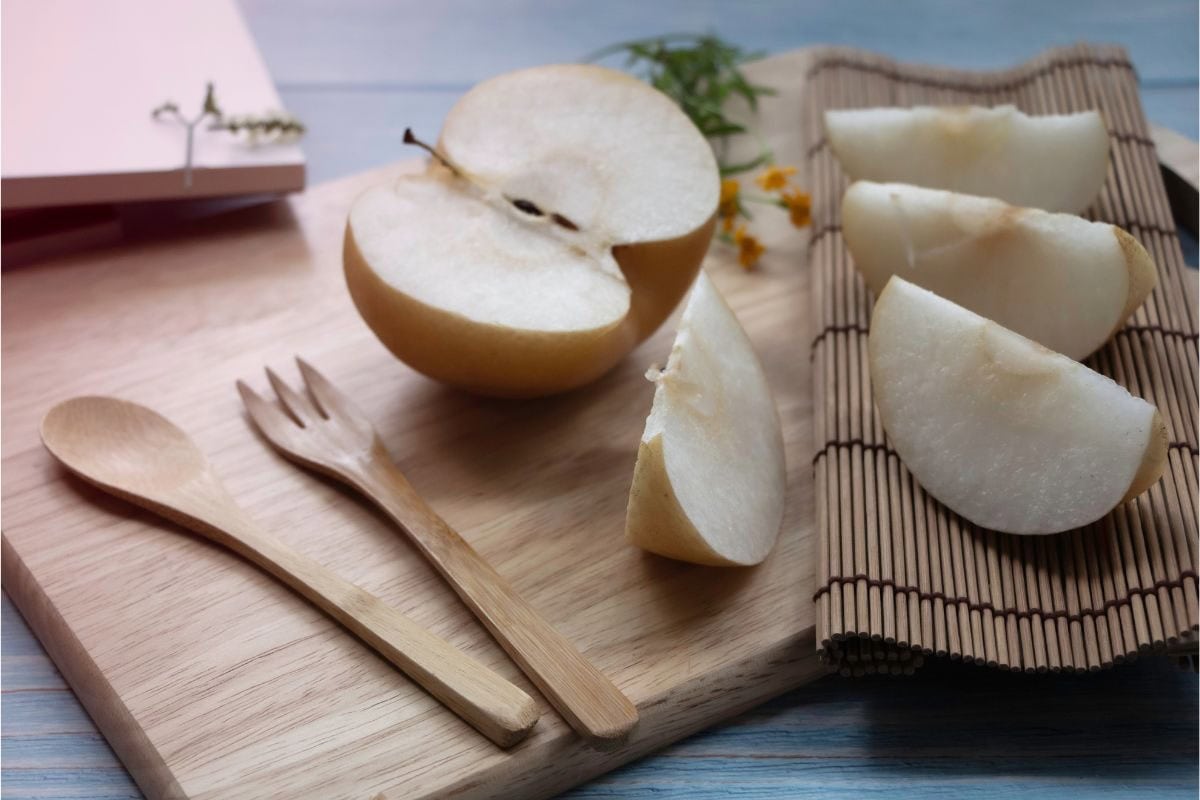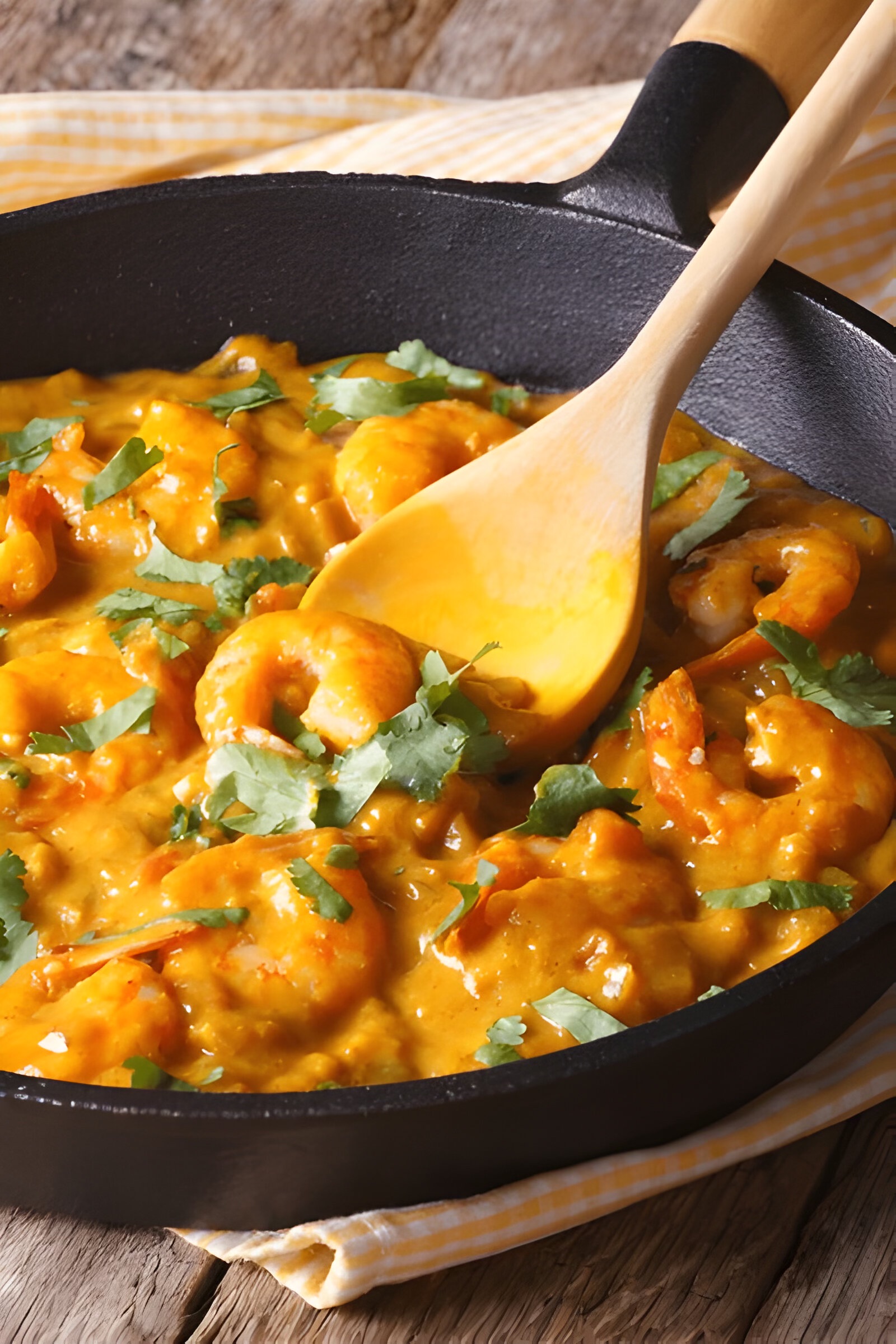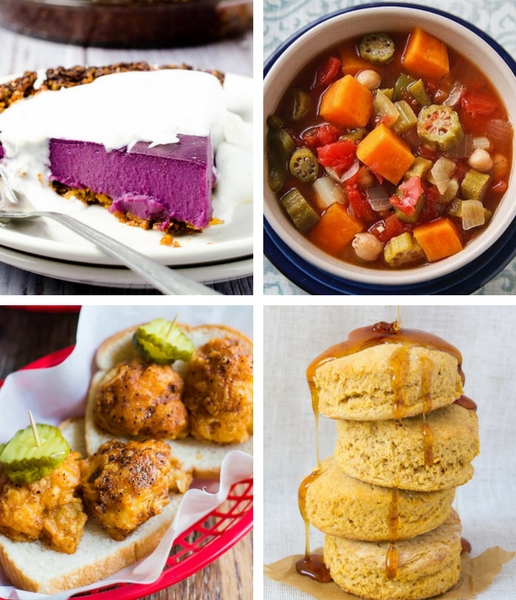56 Weird And Wonderful Foods That Start With K!
HurryTheFoodUp is reader-powered. If you click through using links on our site we may earn a small commission at no cost to you.
If you want to expand your food repertoire, these 56 foods that start with k are a good place to start. Impress your friends with the odd fun fact or nugget of obscure knowledge now!

Did you know that kosher pickles aren’t kosher? Or that fondue has liquor in it? This list of foods that start with k contains interesting facts like this, and more! There are so many different foods that start with k from so many different countries that you are sure to learn something new.
I have split this list into 4 categories to make it easier to navigate. Firstly, there is the savory food category. This includes savory dishes, condiments and ingredients. The next category is sweet food, including desserts and sweet snacks.
Then we have the fruit and vegetable category, which is any plant based food beginning with K.
Finally, the beverages section – which is pretty much self-explanatory!
The list of foods that start with K
Let’s get into it, starting with savory food items, and moving through sweet foods, fruits, vegetables and beverages!
Savory foods that start with k
Kimchi
Kimchi is a traditional Korean side dish consisting of fermented vegetables. The most commonly used vegetables include cabbage, such as napa cabbage, and radish. Kimchi is usually seasoned with chili powder, scallions, garlic, ginger and a type of salted seafood called jeotgal.

Kabobs/kebabs
Kabob, or kebab (the terms are interchangeable) is a type of meat dish originating in the middle east. Kabob can be prepared various ways, but the traditional method is to stick of cubes of meat and/or veg on a skewer grill them.
Kung Pao Chicken
Kung pao chicken is a Chinese dish that originated in the Sichuan province and is now popularly in westernised Chinese cuisine. It is traditionally made with chickens, peanuts, vegetables and chilli peppers. It is very spicy!
Kedgeree
Kedgeree is an Indian dish that was adopted and heavily adapted by the British during colonial times. The main ingredients in kedgeree are flaked fish (usually haddock), rice, parsley, hard-boiled eggs, butter, curry powder and occasionally sultanas.
It is thought to come from Indian ‘khichari’ which refers to a large variety of legume and rice dishes. Kedgeree as it is prepared in Britain today bears very little resemblance to its Indian inspiration.

Kecap Manis
Kecap manis is an Indonesian sauce. It is essentially soy sauce with a sweetener added, such as jaggery or brown sugar. The resulting sauce is a sweeter and thicker version of soy sauce, with a molasses-like consistency.
Ketchup
We all know ketchup I’m sure! This popular condiment is made of tomatoes, sugar and vinegar, along with a series of spices such as onions, allspice, coriander, garlic and mustard. Heinz is the world market leader of ketchup sales!
Knish
Knishes are an Ashkenazi Jewish traditional dish made of a filling covered with dough, that is either baked or deep fried. The most traditional knishes are filled with potatoes, cheese and buckwheat groats. They were popularised in the US by Ashkenazi Jewish refugees from Eastern Europe.

Kosher Pickles
Kosher pickles are not actually KOSHER pickles…if that makes sense! They are not prepared according to Jewish religious standards, rather kosher pickles are pickles made with garlic and brine. The term kosher is used because this style of pickle is commonly sold in Jewish delis.
Koshihikhari Rice
While you may not have heard of koshihikari rice, if you’ve ever eaten sushi then you have eaten it! This kind of rice is used to prepare sushi, because it is starchy and clumps together well. It is mainly grown in Japan and Australia.
Kasha
Kasha is another word for buckwheat and is the term most widely used in Jewish communities to describe both buckwheat and its various preparations. Popular ways to prepare kasha include boiling it in milk or water, to make a porridge, or soaking it in onions and gravy and serving it with pasta.

Kidneys
Some may balk at the idea of eating kidneys, but apparently they are quite delicious. You may have heard of / tried them in steak and kidney pie. Lamb kidneys and pig kidneys are two common kidneys to be eaten.
Kangaroos
Yeah you read it right! Kangaroo meat is a thing and has been eaten by indigenous Australians for centuries. It’s actually super healthy, being very high in protein and low in fat. Kangaroos are not raised for meat and there are quotas of how many can be shot – a step taken in order to protect population levels.

Kippers
A kipper is a whole herring that has been split down the middle, gutted, salted then pickled or smoked over wood chips. They are usually eaten in the UK, Ireland and USA, either for breakfast or afternoon tea.
King Crabs
King crab are, as you might expect, a particularly large variety of crab. They are harvested for their meat, particularly their legs. The classic way to prepare king crab legs is to steam them, then dip them in butter and add a squeeze of lemon.

Sweet foods that start with k
Kettle Corn
Kettle corn is a type of popcorn that is always sweet. It is made using corn kernels, refined sugar, salt and oil. It was traditionally made in a kettle, hence the name!
Key Lime Pie
An American classic, key lime pie is made using key lime juice, egg yolks and sweetened condensed milk. It can be cooked in a pie crust or a graham cracker crust. It is often topped with meringue or whipped cream.

Foods that start with k: Fruit and Vegetables
Kabosu
Kabosu is a type of citrus fruit used in various Asian cuisines. It is closely related to yuzu. Kabosu is often used in lieu of vinegar in Japanese cuisine, as it is sour and has a unique fragrance.
Its scientific name is Citrus Sphaerocarpa.
Kaffir Lime
This type of lime looks like a normal lime except it is extremely wrinkled. It has a somewhat astringent flavor, so its juice is not frequently used in cooking, however its leaves make great seasoning and its rind is often crushed to release oils which are used as fragrance is shampoos and other cosmetics.
Its scientific name is Citrus Hystrix.
Kakadu Plums
Kakadu plums are an Australian fruit which resemble a pear but have a pit in the middle like a plum! This fruits claim to fame is that it contains the highest concentration of vitamin C of any fruit in the world. Just 100 grams gives you 3000% of your daily vitamin C needs!
Its scientific name is Terminalia Ferdinandiana.
Kabocha Squash
Kabocha squash is a type of winter squash from Japan. It looks like a dark green pumpkin but its flavor is unique, in that it is exceptionally sweet! It is delicious roasted steamed or mashed and it is particularly popular in Japan fried in tempura batter.
Its scientific name is Cucurbita Maxima.
Karonda
These small berries are a popular ingredient in Indian pickles and spices. They grow across India. They go by various names in English such as Bengal Currant, Christ’s thorn and Carandas plum.
Its scientific name is Carissa Carandas.

Kai-lan
Kai-lan is also known as Chinese broccoli. It looks a bit like tenderstem broccoli, but with bigger leaves and smaller florets. In fact, tenderstem, otherwise known as broccolini, is a hybrid of broccoli and kai-lan!
Its scientific name is quite a mouthful: Brassica oleracea var. Alboglabra.
Kale
Kale is a popular superfood! This green leafy vegetable is insanely nutritious, containing loads of vitamins and minerals. Did you know that cooking kale diminishes most of it nutrients except vitamins A, C, K and manganese, which remain substantial.
Its scientific name is Brassica Oleracea var Sabellica.
Kaywa
This herbaceous vine grows a small long green fruit, which is predominantly used as a vegetable in Andean cooking. Kaywa is the quechuan name for it – it has been turned in ‘caigua’ in Spanish.
Their scientific name is Cyclanthera Pedata.

Keitt Mango
The Keitt mango is a variety of mango discovered in Florida by a lady called Mrs Keitt, who grew it in her backyard. These mangos have green skin and wonderfully sweet, juicy flesh.
The scientific name of this mango variety is Mangifera Indica ‘Keitt’.
Knobby Russet Apples
These HAVE to be one of the ugliest fruits around. Knobby russet apples have lumpy brown skin that makes them look kind of like a brain! Their flesh is creamy and sweet – what they lack in beauty, they certainly make up for in flavor!
Its scientific name is Malus Domestica ‘Knobby Russet.’
Kapok
In Spanish speaking countries this tree and its fruit are known as ‘ceiba’, but ‘kapok’ is the term more widely used in English. The fruit of this tree splits to reveal pods covered in a fluffy fibre, like cotton candy. This fibre can be used as an alternative to down in mattresses, quilts, pillows and stuffed animal toys. It is very resilient, however it is highly flammable.
Its scientific name is Ceiba Petandra.

Kurrat
Kurrat is a kind of leek that comes from Egypt. It is one of 5 types of cultivated vegetable that come under the Allium Ampeloprasum genus. This type of leek has been cultivated in Egypt for at least 2500 years.
Its scientific name is Allium Amepeloprasum var. Kurrat.
Kuka
This is the word for baobab in the Hausa language of Nigeria! Baobab grows widely across the African continent and its fruit and leaves are edible. Usually the fruit is dried and ground into a powder.
The scientific name for the genus of baobab trees is Adansonia.
Kyona
This leaf vegetable resembles rocket in both appearance and piquant flavor. It is commonly grown and eaten in Japan (hence its alternative name, Japenese mustard greens), where it is used in stir fries and hot pots.
Its scientific name is Brassica rapa var. Niposinica.

Karkalla
This plant grows on the ground in coastal areas of Australia. It has a salty flavor so is usually eaten in a savory capacity, either dried or with meat. It has a couple of fun alternative names, my favorite being ‘pigface’!
Its scientific name is Carpobrotus Rossii.
Kangkong
Kangkong is a leafy green vegetable similar to spinach or watercress, which is used in various cuisines across Southeast Asia. Also known as water spinach, this plant grows best in damp environments. It tastes similar to spinach but sweeter.
Its scientific name is Ipomoea Aquatica.

Kelp
Kelp is a type of large brown seaweed that is very high in nutrients! It contains iodine, vitamin K, various B vitamins, iron, zinc and some powerful antioxidants. You can eat it raw or cooked, or even in powder form!
Its scientific name is Laminariales.
Kidney Bean
Kidney bean is a popular type of bean, named after its resemblance to a human kidney. One of the most famous uses for kidney beans is in the preparation of chili con carne (or chili sin carne, in our vegetarian version!)
Their scientific name is Phaseolus Vulgaris.
Koroī
Also known as kahikatea berries, the berries of the kahikatea tree in New Zealand are small, tart and red. They can be eaten raw or turned into jams and sauces. The kahikatea tree is important in Maori mythology.
Its scientific name is Dacrycarpus dacrydioides.
Kanzi Apple
This variety of apple is similar to a jazz apple. It is crisp, sweet and round. It was bred as a hybrid of royal gala apples and braeburn apples by scientists in Belgium. Kanzi is swahili for ‘hidden treasure’.
Its scientific name is Malus Domestica ‘Kanzi’.
Kyoho Grapes
Kyoho grapes are a type of grape popular in Japan. They are a fox grape cross and a slip-skin variety, which mean their skin comes off easily. They are large, purple-black coloured and juicy, with big seeds.
Its scientific name is Vitis Vinifera ‘Kyoho’.

Komatsuna
Komatsuna is part of the same family as kyona (mentioned above). This green, spinach-like leaf was named after a river in a village near Tokyo, where there is a shrine that offers it up to deities on New Years Eve!
Its scientific name is Brassica rapa var. perviridis.
Kombu
Kombu is a type of kelp that is part of the diet of many civilisations from Iceland to China to Japan! It is usually sold either dried or pickled. In Japan, dried kombu is used to make a soup stock called dashi.
Its scientific name is Laminariaceae.
Kohlrabi
Kohlrabi is German for ‘turnip cabbage’, which is what this vegetable resembles! However it is not part of the turnip family, only the cabbage family. Kohlrabis are round and stout and can be eaten raw or cooked. They have a sweet flavor.
The scientific name of the kohlrabi is Brassica oleracea Gongylodes Group.

Kei Apples
Kei apples are not in fact apples, they more closely resemble apricots! These round yellow fruit grow across the African continent. They are soft and juicy with a wonderfully sweet flavor.
Its scientific name is Dovyalis Caffra.
Kepel Fruit
This fruit grows in the humid evergreen forests of Southeast Asia. The fruit has a flavor akin to mango which is used in Java as an oral deoderant! What’s more, this fruit was loved by Javanese princesses because it was believed to be symbolic of unity and mental and physical integrity (it was also used as a contraceptive!)
Its scientific name is Stelechocarpus Burahol.

Keule Fruit
Gomortega keule only grows in Chile. The fruits are egg sized and yellow with a sweet, tasty flavor. The tree that keule fruit grow on is currently an endangered species, due to over-harvesting and deforestation.
Its scientific name is Gomortega Keule.
Korean Pear
This pear is round and looks more like an apple. It is also known as a Chinese pear, Japanese pear and Taiwanese pear, so who knows where it actually originates! Either way, they are a delicious fruit with fragrant flavor.
Their scientific name is Pyrus pyrifolia.

Key Limes
Key limes are a type of lime native to Southeast Asia. They are also called acid lime. The name ‘key lime’ comes from the fruits association with Florida Keys, where the American dish Key lime pie originated.
Its scientific name is Citrus × aurantiifolia.
Kaki Persimmon
This is the most widely cultivated type of persimmon. The fruit has a sweet, slightly tangy flavor. Persimmons have been cultivated in China for the past 2000 years, although the first botanical description of one only appeared in 1780.
Its scientific name is Diospyros kaki.
Kiwi
Kiwi are a fruit native to New Zealand. They are high in vitamin C and dietary fibre. They are also rich in other vitamins and antioxidants which mean that eating kiwis can help to support heart health, digestive healthy and your immune system. Another name for kiwi is Chinese gooseberry.
Its scientific name is Actinidia Deliciosa.
Korlan
Korlans look like small oval shaped lychees and are closely related to this fruit. They grow wild in most Southeast Asian countries and are grown in Thailand and Malaysia. They have not travelled outside of the continent.
Its scientific name is Nephelium hypoleucum.
Kutjera
Kutjera grows in the Australian desert. The fruit dries on the bush. They resemble raisins and taste strongly of tamarind and caramel. You can buy them whole or ground into a powder. Popular uses of kutjera include as a crust on meat, mixed into sauces or salads.
Its scientific name is Solanum Centrale.
Kumquat
References to the kumquat plant date back to Chinese Imperial literature from the 12th century. These olive shaped fruits look like tiny oranges, but unlike oranges, they have deliciously sweet edible skin!
Its scientific name is Citrus Japonica.
Kwai Muk
This is a pretty obscure one! Part of the same family as jackfruit, but much smaller, these Asian fruits have yellow skin and sweet pink flesh. It is delicious both raw, dried and preserved in sugar.
Their scientific name is Artocarpus hypargyraeus.
Kenchur
Kenchur, or aromatic ginger, is part of the ginger family. It is actually a type of galangal. It is cultivated across Southeast Asia and has one of the most unique flavors of the ginger family, pungent and aromatic.
Its scientific name is Kaempferia Galanga.
Foods that start with k: Beverages
Kvass
Kvass is a drink from Eastern Europe, made out of fermented rye bread or rye flour. It is a light brown color and has a sweet-sour taste. The first written record of such a drink dates back to 996!

Kirsch
Kirsch is a German brandy made from fermented cherries. It is colorless and not sweet, unlike many other cherry liqueurs. Kirsch is usually drunk neat, but it is also a key ingredient in fondue!
Kahlua
Kahlua is a coffee liqueur from Veracruz, Mexico. It is made out of rum, sugar and arabica coffee. It is used in many classic cocktails such as the white Russian, baby guinness and espresso martini.
Kava
Not to be mistaken with cava, the sparkling Spanish wine, this is a drink from the Pacific Islands. The drink has a sedative, anesthetic and euphoriant effect, similar to an alcoholic beverage. A British non-profit has been researching the possible use of kava as an anti anxiety medicine!

I hope you have enjoyed learning all the different foods that start with k. Drop me a comment below if you know any other foods starting with the letter k.
We also have separate lists of fruits that start with K and vegetables that start with K if you need even more food words power!
If you want to learn even more take a look at my posts on foods that start with J and foods that start with L.
56 Weird And Wonderful Foods That Start With K!
Want to learn all the foods that start with k? From savory to sweet to beverages, you can learn them all here!
Savory Food
- Kimchi
- Kabobs
- Kung Pao Chicken
- Kedgeree
- Knish
- Kecap Manis
- Ketchup
- Kosher Pickles
- Koshihkhari Rice
- Kasha
- Kidneys
- Kangaroo
- Kippers
- King Crab
Fruits and Veg
- Kabosu
- Kaffir Lime
- Kakadu Plum
- Kabocha Squash
- Kai-lan
- Kale
- Kaywa
- Keitt Mango
- Knobby Russet Apples
- Kurrat
- Kuka
- Kyona
- Kapok
- Karkalla
- Karonda
- Kangkong
- Kelp
- Kidney Bean
- Koroī
- Kanzi Apple
- Kyoho Grapes
- Kohlrabi
- Komatsuna
- Kombu
- Kei Apple
- Kepel
- Keule
- Korean Pear
- Key Limes
- Kaki Persimmon
- Kiwi
- Korlan
- Kutjera
- Kumquat
- Kwai Muk
- Kenchur


